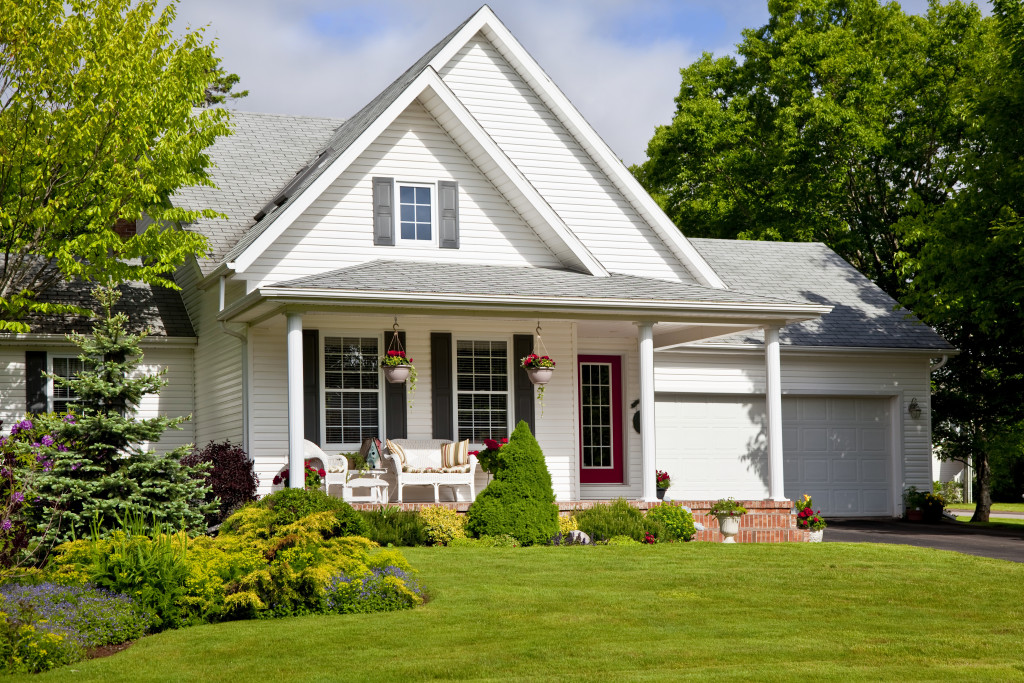Living in a warm climate can be challenging during the summer months when temperatures soar and air conditioning is mandatory to keep cool. That results in costly electricity bills. However, there are many ways to naturally cool your home and reduce the need to use air conditioning. This article will explore different methods of cooling your home using natural methods.
Green Roof
A green roof is a type of roof that is covered in vegetation. It can help keep a house cooler in the summer by providing shading and evapotranspiration. That is the combination of water evaporation from the soil and the transpiration or vaporization of water from plants.
A green roof also improves air quality by absorbing pollutants and releasing oxygen. Furthermore, a green roof helps reduce noise pollution because the vegetation acts as a sound absorber.
Cool Roof
If it is not possible to plant on your roof, the next best thing is to make it into a cool roof. You can do this by coating it with a special reflective paint that will prevent the roof from absorbing the heat from the sun.
According to the U.S. Department of Energy, an untreated roof can be as hot as 150 degrees Fahrenheit in summer. This heats up the inside of the house. By using a reflective coat you can reduce the roof temperature to 100 degrees Fahrenheit or lower. A white reflective paint is more effective than dark ones.
Green Wall
Green walls are similar to green roofs, but they are walls covered in vegetation. Like green roofs, green walls can help keep a house cooler in the summer by providing evapotranspiration. Green walls also improve air quality by absorbing pollutants and releasing oxygen. Likewise, they absorb noise, making the home more pleasant to live in.
A green wall design is artistic and decorative. It can enhance the look of any house and provide a beautiful focal point. Plants of varying shades can be used to create various designs.
Indoor Plants
Indoor plants not only look good, but they can also help cool your home naturally. Indoor plants release water vapor into the air which helps to humidify the air and lower the temperature. The USDA estimates that they can lower indoor temperature by up to ten degrees.
You can further improve the air-cooling abilities of plants by grouping them together. Grouped plants create an eco-system that provides more humidity to the immediate surroundings.
Indoor plants also absorb carbon dioxide and pollutants while releasing oxygen which helps to improve air quality. Choose plants with bigger leaves that produce more oxygen.
Indoor plants can also help to reduce noise pollution. For instance, surrounding your home workspace with plants can lower noise levels by up to five decibels.

Cross-Ventilation
Cross-ventilation is a method of ventilation where stale air is expelled through windows on one side of a room and fresh air is brought in through windows on the other side. This method of ventilation helps to cool a room by using the wind to circulate the air.
If there is no window opposite an open window, install an exhaust fan to suck out warm air. If you are building a house, ask the architect to ensure that the design allows natural cross-ventilation.
Insulation
Insulation helps to keep a house cool in the summer by keeping the heat out. Good insulation in a home will reduce the amount of heat that enters the house and keeps it cooler.
Install insulation in the walls, ceiling, and attic. Solid insulation is twice as effective as hollow insulation in blocking out heat.
Window Glass Treatment
Replace ordinary window glass with low-emissivity (low-E) glass panes. These have an insulating glaze that stops heat from penetrating the house.
A less expensive alternative is to apply tinted film to the existing window glass. Similar to the film used in car windows, this can help keep a house cool in the summer by blocking out the sun’s rays. This helps to reduce the amount of heat that enters the house without blocking your view.
Trees
Trees can provide shade and cool a house. They also help to improve air quality and reduce noise pollution. In addition, they are beautiful and add to the curb appeal of a home.
According to the U.S. Environmental Protection Agency (EPA), research shows that the best way to use trees to cool a house is to place them in the west where they can shade part of the roof and windows.
Keep Cool in Warm Weather
Living in a warm climate can be difficult during the summer months. However, there are many ways to cool your home naturally using methods that are inexpensive and environmentally friendly. This article explored different methods of cooling your home using natural means. By using any or all of these methods, you can keep your home cooler, use the air conditioning less, and save money. You will also be helping the environment.


